Fruits that start with G include both well-loved varieties and exotic options. This group features many tastes, from sweet grapes and green apples to tangy grapefruit and tropical guava.
The colors and textures of these fruits vary widely, ranging from the deep purple of grapes to the bright yellow of grapefruits and the lush gold of golden kiwis.
These G-named food items cover a broad range of tastes: grapes and apples tend to be sweet, grapefruits offer a sour punch, and guavas mix sweet with tart.
They’re versatile in use—grapes can be eaten fresh, made into wine, or dried as raisins, while others like guava and grapefruit are great in juices, desserts, and salads.
Let’s sit back, relax, and determine what fruits begin with the letter ‘G.’ In the end, I’ll also share some vegetables that begin with ‘G.’
Ready, let’s start now!
27 Fruits that Start with G with Filters
Check out this list of 27 fruits starting with G, organized by how common they are. You can use the filter to find out which are national, exotic, and perfect for cooking, making drinks, or decorating dishes.
Grape
- Spain
- For Beverages
- For Dishes
- For Garnish
- National
Grape is a small, juicy fruit native to the Near East and Central Asia, coming in forms that vary in color (green, red, and purple) and taste (sweet to tart).
Grapes have a cultivation history that dates back thousands of years, leading to a wide range of types, including table grapes, wine grapes, and raisin grapes.
Some famous variations include Thompson Seedless, Concord, and Cabernet Sauvignon. Grapes are typically sweet and can have a crunchy or soft texture. They grow in clusters and are harvested in late summer to early fall.
Grapes can be eaten fresh as a snack, used in cooking, or processed into products like juice, jelly, and wine. They’re popular worldwide, especially in regions known for wine production, such as France, Italy, and the United States.
Grapefruit
- For Beverages
- For Garnish
Grapefruit, a citrus fruit known for its slightly bitter and sour taste, is a hybrid originating from Barbados. This fruit, a cross between a pomelo and an orange, is now cultivated in various subtropical zones worldwide.
Grapefruits come in several varieties, including the Ruby Red, White, and Pink grapefruits. The fruit appears round, with a yellow-orange skin and segmented flesh inside. It’s typically in season from winter through early spring.
Eating a grapefruit involves slicing it in half and scooping out the segments with a spoon, although peeling and eating it like an orange is also common. It’s frequently used in salads, desserts, and juices.
Grapefruit is popular in the United States, particularly in Florida, California, and Texas, where it is grown extensively.
Guava
- For Beverages
- For Dishes
- For Garnish
Guava, a tropical fruit, is native to Mexico, Central America, and the northern parts of South America. It’s now grown in many tropical and subtropical regions globally. Some common guava varieties include the Apple Guava, Strawberry Guava, and Lemon Guava.
They typically have a sweet and slightly floral taste, with pink or white flesh and green skin. Guavas are often eaten raw but can also be juiced or used in cooking for desserts, jams, and sauces.
They’re particularly popular in the regions they originate from, such as Latin America, the Caribbean, and parts of Asia like India, where they’re grown widely.
Green Apple
- For Beverages
- For Dishes
- For Garnish
Green apple has a crisp and tart flavor and bright green skin. This fruit, which comes from Australia but is grown globally, is famous for its refreshing taste and firm flesh.
Green apples, such as the Granny Smith, are famous variations widely recognized for their use in cooking and baking.
They have a sharp, refreshing taste with a slightly sweet undertone and are available throughout the year, though their peak season is late summer to early fall.
Eating green apples can be as simple as biting into their crisp flesh or slicing them for a snack. They are commonly used in salads, pies, and sauces because their tartness balances sweet and savory dishes.
Green apples are particularly popular in the United States, Europe, and Australia. They thrive in temperate climates and are a staple in American Thanksgiving celebrations, often featured in pies and desserts.
Gala Apple
- For Beverages
- For Dishes
- For Garnish
Gala apple, also known as a sweet apple, is a fruit variety with a sweet flavor and a beautiful appearance, characterized by a gradient of yellow to red skin.
Originally from New Zealand, Gala apples have become a favorite globally, especially in the United States and the United Kingdom. Famous types include the Royal Gala and Imperial Gala, both known for their sweeter taste and firm texture.
Gala apples have a mild and sweet flavor and fine texture, making them perfect for fresh eating. They are typically harvested in the late summer to early fall.
Due to their sweetness, Gala apples are often eaten raw, added to salads for a sweet crunch, or used in making apple sauce and cider. They are widely cultivated in temperate regions worldwide, with significant popularity in the United States, Europe, and New Zealand.
Golden Kiwi
- Exotic
- For Beverages
- For Garnish
Golden kiwi, also known as gold kiwifruit or kiwi gold, is a variety of kiwifruit with a smooth, bronze skin, a beak shape at one end, and golden flesh. Originating from New Zealand, this exotic variation stands out for its sweeter and more aromatic flavor than the green kiwifruit.
Its season peaks from May to October, offering a tropical taste with hints of mango and melon. The golden kiwi is high in vitamins C and K and is known for its juicy texture and edible skin.
Eating a golden kiwi is straightforward—simply cut and scoop out the flesh or eat it whole like an apple. It’s often used in salads, smoothies, and desserts or enjoyed on its own.
Granadilla
- Exotic
- For Beverages
- For Garnish
Granadilla, also known as sweet granadilla, is a passion fruit with a hard, orange exterior and a sweet, seedy interior. It is native to South America but has become a beloved exotic fruit in Africa and Australia.
The fruit is known for its sweet, floral flavor and jelly-like texture, filled with black seeds. Granadilla is typically in season from late summer to early winter.
The best way to enjoy granadilla is to cut it in half and scoop the pulp with a spoon. It’s commonly used in juices, desserts, salads, or simply eaten independently. Granadilla is popular in its native South America, as well as in Central America, the Caribbean, and parts of Africa.
Grand Nain Banana
- For Beverages
- For Dishes
Grand nain banana, often simply known as the Chiquita banana after its most famous distributor, is a cultivar of the Cavendish group. It’s recognized as the leading commercial banana in the Western world because it’s strong enough to handle being transported long distances.
Native to the Canary Islands and Central America, this banana variety is now grown in banana-producing countries worldwide. The Grand Nain is known for its thick, bright yellow skin when ripe, and sweet, creamy flesh. It’s available year-round due to its global cultivation.
Eating a Grand Nain Banana is as simple as peeling it from the top. They’re often eaten raw, added to fruit salads, smoothies, or baked goods like banana bread.
This banana variety is most popular in North America and Europe but is grown in tropical regions worldwide, such as Latin America and the Caribbean.
Guarana
- Exotic
- For Beverages
Guarana fruit has its roots in the Amazon basin and is especially common in Brazil. It’s known for its fruit, about the size of a coffee berry.
Each fruit contains seeds that are a source of guaranine, a substance similar to caffeine, making guarana a popular ingredient in energy drinks and supplements.
The seeds are dark brown, surrounded by white arils, giving them an eye-like, distinctive appearance. Guarana is bitter and often used in powdered or syrup form rather than eaten fresh.
Guarana is typically dried and ground into a powder, then added to beverages or foods for an energy boost. It’s a key ingredient in many energy drinks and sodas in South America, particularly in Brazil, where it’s also celebrated for its medicinal properties.
Guavaberry
- Exotic
- For Beverages
- For Garnish
Guavaberry, not to be confused with guava, is a small, wild fruit originating from the Caribbean and parts of Central and South America. It’s the fruit of the Myrciaria floribunda tree, unrelated to the common guava.
Guavaberries are tiny, with a sweet and slightly tart flavor, and range in color from red to black. They’re often used to make jams, jellies, and liqueur.
The liqueur made from guavaberries is a traditional Christmas drink in places like St. Maarten and the Virgin Islands, integral to holiday festivities.
Guanábana
- Exotic
- For Beverages
- For Dishes
Guanábana, also known as soursop, is a tropical fruit native to the Americas, particularly in the Caribbean, Central America, and South America. This fruit is known for its combination of a sweet and tangy flavor, often likened to a mix of strawberry, pineapple, and citrus.
It has a green, spiky exterior and a soft, white, fibrous interior filled with black seeds. Guanabana is available mostly in the warmer months of the year.
To enjoy guanabana, you cut it open, remove the seeds, and scoop out the creamy flesh, which can be eaten raw or used to make beverages, ice creams, and desserts.
Galia Melon
- Exotic
- For Beverages
- For Dishes
- For Garnish
Galia melon, a type of melon similar to cantaloupe, was first developed in Israel and is a hybrid of the green-fleshed honeydew and the netted-skinned cantaloupe. It has a round shape with a yellow to green outer skin and a sweet, aromatic, pale green flesh inside.
The taste of Galia melon is often described as a sweeter, more perfumed version of its cantaloupe cousin, available primarily during the summer months.
Galia melons are typically eaten fresh; the flesh can be scooped from the halved fruit or cut into slices or cubes. It’s a popular addition to summer salads, desserts, and refreshing drinks.
While originally from Israel, Galia melon has gained popularity across Europe, especially in the UK, and is also enjoyed in the United States and parts of Asia.
Gorham Pear
- For Dishes
- For Garnish
Gorham pear is a cultivated variety of pear from Europe and Asia, known for its juicy and sweet flavor profile. It is widely adapted in other regions, including North America, where they are cultivated as a favored fruit crop.
The Gorham pear has a smooth skin that can range from green to yellow as it ripens, with some varieties showing a slight blush. Its season typically falls in late summer to early fall, making it a perfect transition fruit from the warm to the cooler months.
The taste is predominantly sweet with a buttery texture that melts in your mouth. Eating Gorham pears is straightforward – they can be enjoyed fresh, sliced into salads, or even baked into desserts.
Golden Plum
- Exotic
- For Beverages
- For Dishes
Golden plum, also known for its radiant yellow color, is a type of plum that stands out for its sweet and slightly tart flavor. Golden plums originate from Europe and Asia but have found a welcoming home in many other parts of the world, including the United States.
They boast several variations globally, the most notable being the Mirabelle and the Greengage.
Golden plums are most enticing when ripe, featuring a vibrant yellow to golden skin that’s firm yet yielding to the touch, with a juicy, sweet interior. They’re typically in season from late spring through the end of summer.
To enjoy a Golden Plum, you can simply wash and eat it whole, cook it down into jams or compotes, or use it as a tart complement to savory dishes. In regions like France, the Mirabelle plum, is celebrated with its own festival, the “Fête de la Mirabelle” in Metz.
Greengage
- Exotic
- For Beverages
- For Dishes
Greengage, also recognized as Reine Claude, is a type of European plum known for its rich, sweet flavor. Native to France, this fruit is celebrated for its distinctive green exterior and succulent, honey-flavored flesh.
Among its variations, the ‘Old Greengage’ and the ‘Golden Gage’ stand out. Its appearance is characterized by a small, round shape with smooth, green skin that turns slightly yellow when fully ripe.
The flesh is tender, juicy, and exceptionally sweet, making it a favorite for fresh eating and use in jams, desserts, and savory dishes. In France, where the greengage holds a special place, it’s often used in traditional pastries and confitures.
Goji Berry
- Exotic
- For Beverages
- For Dishes
Goji Berry, also known as wolfberry, is a type of berry with roots in Asia, particularly China, where it has been used for centuries in traditional medicine and cooking. Goji berries are small, red, and have a slightly sweet and sour taste that makes them distinct.
They are available fresh, dried, or as an ingredient in various supplements and health foods. They are often eaten dried, similar to raisins, added to teas and soups, and used in cooking to boost meals’ nutritional boost.
Goji berries grow best in temperate and subtropical regions in China and the Tibetan Himalayas.
Guabiroba
- Exotic
- For Dishes
Guabiroba, or Gabiroba, is a fruit native to Brazil and parts of South America. It belongs to the family of Campomanesia, with a round to oval shape and a green to yellowish color when ripe. The fruit has a unique taste that combines sweetness with a touch of acidity.
Guabiroba is often eaten fresh or used to prepare desserts, jams, and beverages in South America. It’s known for its refreshing taste, especially appreciated on hot days. The fruit is most commonly found and consumed in Brazil, where it grows wild in the Cerrado.
Grumichama
- Exotic
- For Dishes
Grumichama is a tropical fruit from Brazil, often likened to the cherry due to its size, color, and taste. It belongs to the Myrtaceae family, including guava and feijoa.
The fruit is small, has deep purple to black skin when ripe, and contains one to four seeds. Its flavor is sweet and slightly tart, reminiscent of a cherry with a touch of grape flavor. Grumichama fruits are usually consumed raw but can also be used to make jams, jellies, and wines.
Gooseberry
- For Beverages
- For Dishes
- For Garnish
Gooseberry is a small, spherical fruit native to Europe, northwestern Africa, and southwestern Asia. Part of the Ribes family, it’s known for its tart, juicy taste, often with a slightly sweet finish.
Gooseberries can vary in color from green to red, purple, or even yellow. Common types include the European gooseberry (Ribes uva-crispa) and the American gooseberry (Ribes hirtellum). They are rich in vitamin C and dietary fiber.
Gooseberries are versatile in the kitchen, used in pies, jams, desserts, and savory sauces accompanying meats. They are typically in season in late spring through summer.
Gac Fruit
- Exotic
- For Beverages
- For Dishes
Gac fruit, often referred to as the “fruit from heaven” or “baby jackfruit,” is a Southeast Asian native fruit, particularly found in Vietnam. It’s known for its spiky outer shell and vibrant orange interior.
Gac fruit is often mixed into sticky rice dishes, and smoothies, or used as a natural food coloring to create a vibrant red or orange hue in traditional Asian cuisines.
The fruit is typically harvested twice a year, aligning with ceremonial and festive occasions in Vietnam, such as the Lunar New Year, where it’s used in making xôi gấc, a special festive dish.
Goumi
- Exotic
- For Beverages
- For Garnish
Goumi is a small, bright red berry indigenous to East Asia, particularly in Japan, Korea, and China. This fruit is part of the Elaeagnaceae family, growing on a shrub valued for its tasty fruits and ornamental beauty.
Goumi berries are slightly tart with a sweet finish, resembling a taste of cherry. They’re typically harvested in early summer. Due to their high pectin content, goumi berries are excellent for making jams, jellies, and syrups, although they can also be eaten fresh.
Genip Fruit
- Exotic
- For Beverages
Genip fruit, also known as Spanish lime, quenepa, or mamoncillo, is a tropical fruit found primarily in the Caribbean, Central and South America. It grows on the Melicoccus bijugatus tree, part of the soapberry family, including lychee and longan fruits.
The genip fruit has a tough, green outer skin that encases a soft, juicy pulp surrounding a large seed. The taste is a unique blend of sweet and tart, often described as a mix between a lime and a lychee.
Genip fruits are typically consumed directly; the skin is cracked open, and the pulp is sucked from the seed. They’re also used in making beverages, desserts, and jams.
Governor’s Plum
- Exotic
- For Beverages
- For Dishes
Governor’s plum is a fruit that originated in Africa and Asia. When ripe, this small, hardy tree produces plum-like fruits ranging from yellow to deep red or purple. The fruits are small and round with a slightly tart flavor when unripe, becoming sweeter and more flavorful as they mature.
The flesh of the Governor’s plum is firm, enclosing a few small seeds. It’s consumed fresh, made into jellies or jams, or used in various culinary dishes for its tangy taste.
Ground Plum
- Exotic
- For Dishes
Ground plum is part of the legume family and has its roots in North America, particularly in the prairies and grasslands. Unlike traditional plums, ground plums are small, edible pods that resemble peas or small plums.
These pods turn from green to purplish as they mature and have a sweet, slightly nutty flavor. Ground plums are typically eaten raw when they are young and tender, but they can also be cooked in a similar fashion to garden peas.
They are most commonly enjoyed in the spring and early summer, adding a seasonal delight to salads and dishes.
Ground Cherry
- For Beverages
- For Dishes
- For Garnish
Ground cherry is a small fruit encased in a papery husk, similar to a tomatillo. These fruits are native to the Americas but have been spread to other parts of the world, including Europe and Africa.
Ground cherries have a sweet and tangy flavor, often compared to a blend of pineapple and tomato. They can be eaten raw, added to salads, baked into desserts, or made into jams and sauces.
The fruit turns from green to golden-yellow when ripe, and is usually ready to eat once it falls to the ground, hence the name “ground cherry.”
Giant Lau Lau
- Exotic
- For Dishes
Giant Lau Lau is a tropical fruit in South America, particularly in the Amazon rainforest. This fruit belongs to the Sapotaceae family, which includes other well-known fruits like sapote and mamey.
The Giant Lau Lau produces large, oval fruits with thick, green skin covering a creamy, orange flesh. The Giant Lau Lau fruit tastes sweet and rich, often compared to a mix of pumpkin and sweet potato with a hint of almond.
It’s typically eaten fresh, with the flesh scooped out, or used in desserts and smoothies to add sweetness and a creamy texture.
Green Anjou Pears
- For Beverages
- For Dishes
Green Anjou pears, a popular variety of pear cultivated mainly in the United States, especially in Oregon and Washington, are known for their egg-shaped appearance and bright, lime-green skin.
Green Anjou pears have a subtly sweet flavor with a hint of lemon-lime and a slightly firm texture that softens beautifully when ripe. They are incredibly versatile and are enjoyed fresh, baked, poached, or added to salads and cheese boards.
Their season extends from early fall through spring, making them a staple in many households for much of the year.
What Are the Most Popular Vegetables that Begin with G?
Let’s talk about five popular vegetables beginning with the letter G:
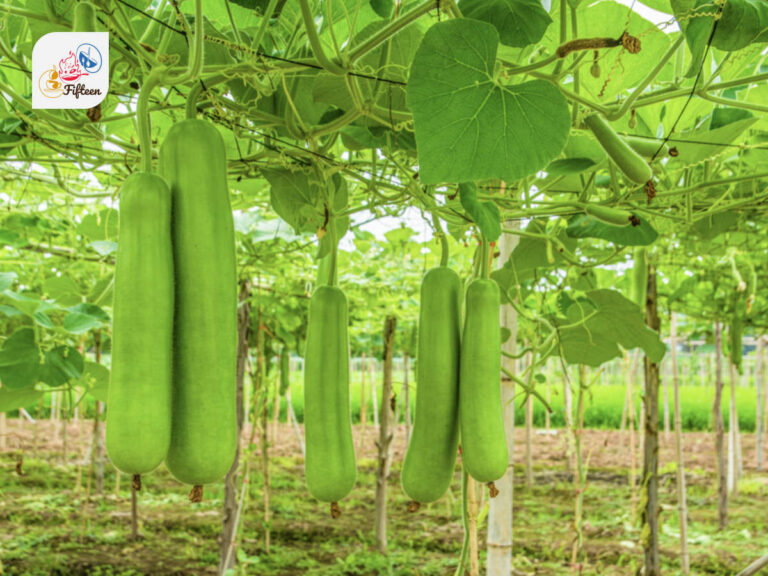
Gourd
Gourds refer to various plant species of the family Cucurbitaceae, cultivated mainly for their hard shells or edible flesh.
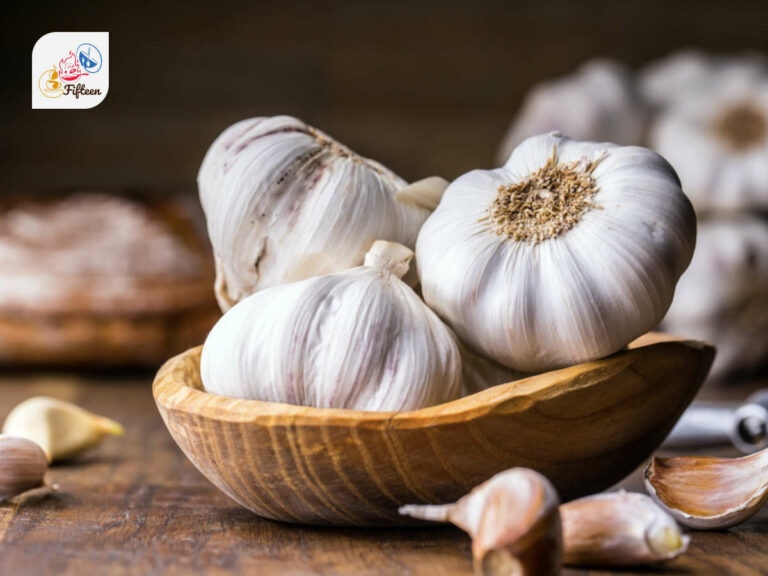
Garlic
Garlic is a flavorful bulb used widely as a seasoning or condiment.
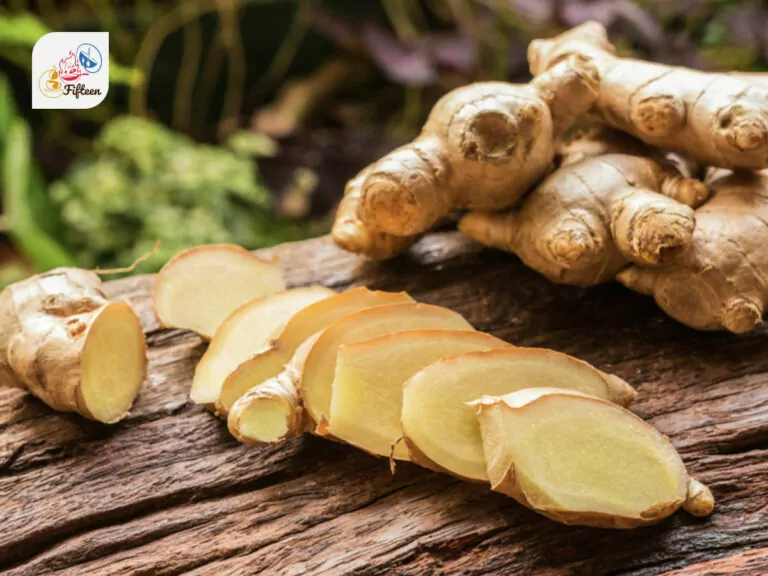
Ginger
Ginger is a rhizome with a spicy, pungent taste, used in cooking and as a medicinal herb.
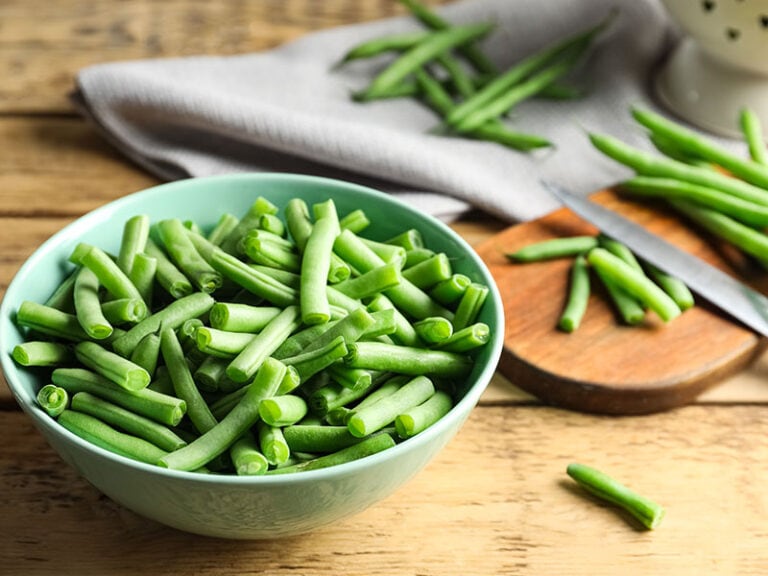
Green Bean
Green beans are long, slender edible pods of the bean plant, enjoyed cooked or raw.
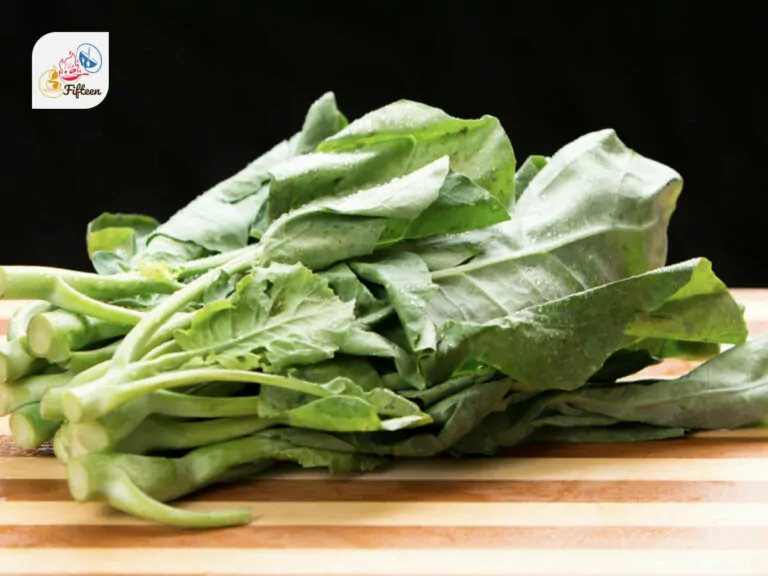
Gai Lan
Gai lan (also known as Chinese broccoli) is a leafy green vegetable with thick, flat leaves and thick stems, used in Asian cuisine.
Remember, this is just a small sample; many more G veggies are out there waiting for you to discover them.
I hope you picked up some fun facts about fruits starting with G. It’s always great to learn new things.
If I missed any G fruit, let me know in the comments. Thanks for checking out this post. Feel free to share it with friends and family; it might spark interesting conversations.
And remember, there’s a whole world of fruits from A to Z to explore, so don’t stop here!

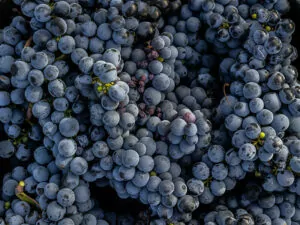

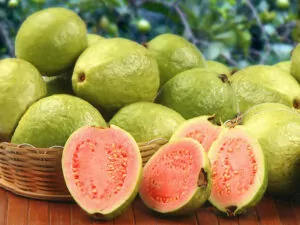
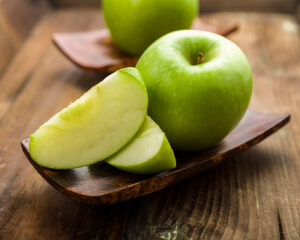
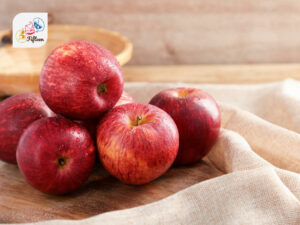
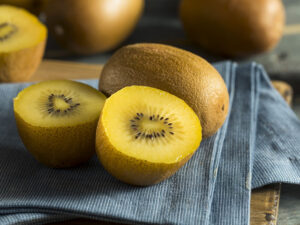
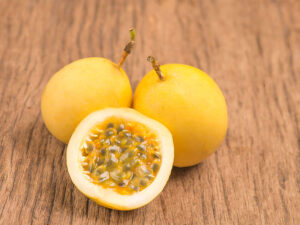

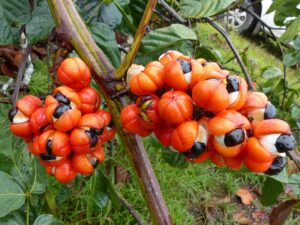
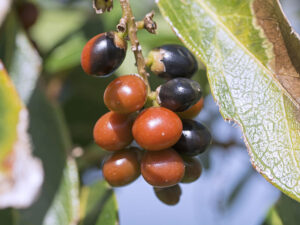
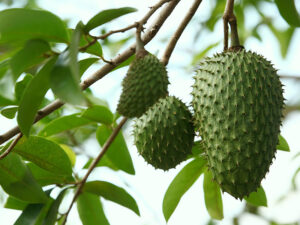

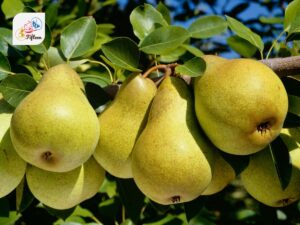
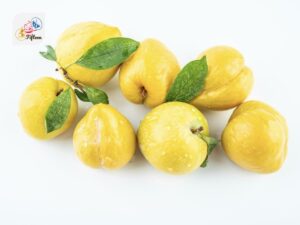
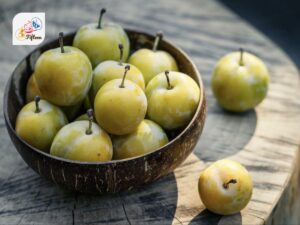
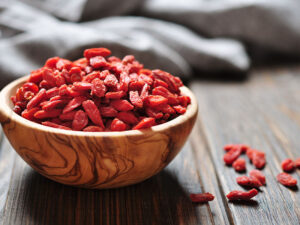
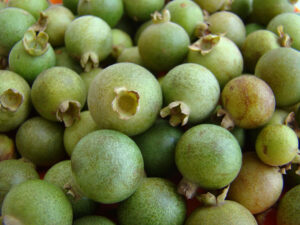
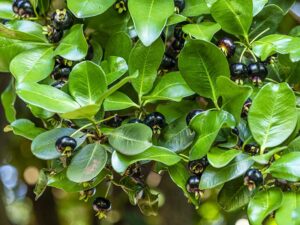
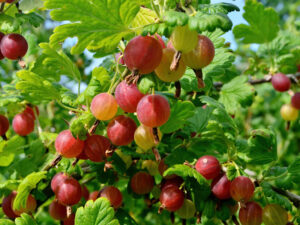
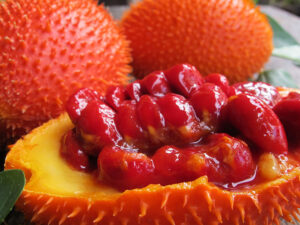
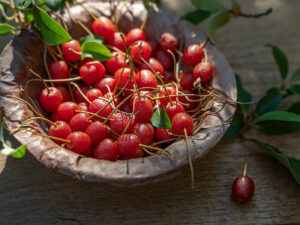
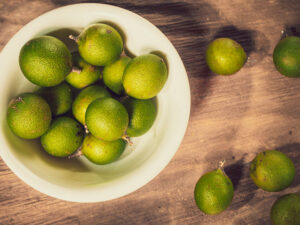
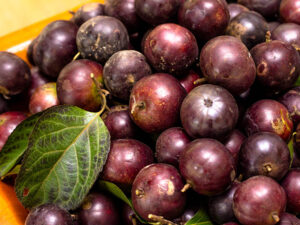
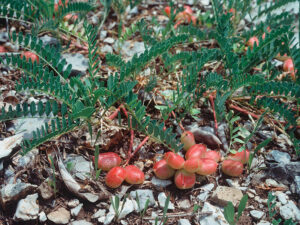
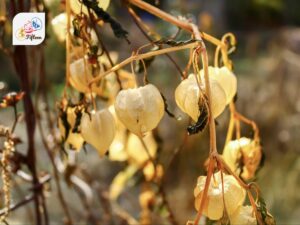
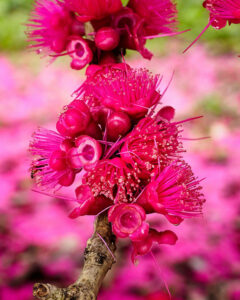
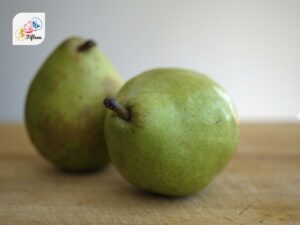
Jamie Scott
Editor in Chief, Senior Content Writer
Expertise
Home Cooking, Meal Planning, Recipe Development, Baking and Pastry, Food Editor, Cooking-video Maker, Western Food Evaluation Expert
Education
Le Cordon Bleu College of Culinary Arts
Local Community College, New York, NY
Jamie Scott is a skilled culinary expert and content creator specializing in Western cuisine. With over 15 years in the culinary field and formal training from Le Cordon Bleu, Paris, Jamie deeply understands how to blend nutrition with delicious flavors. His passion for cooking matches his commitment to making healthy eating accessible and enjoyable.
On Fifteen.net, Jamie brings a fresh perspective to classic dishes and beverages, offering readers insightful recipes, cooking tips, and a fresh view on meal planning that emphasizes taste, health, and simplicity.